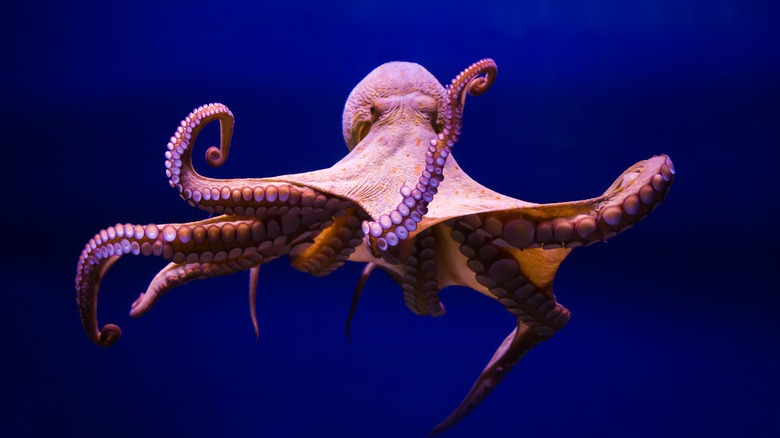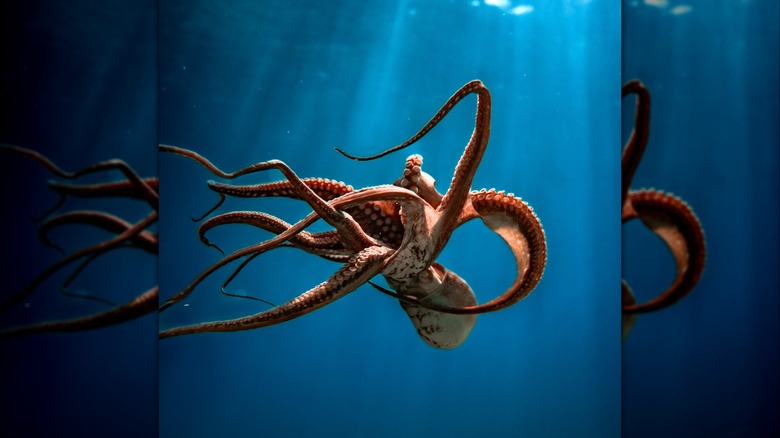Octopuses Have Three Times As Many Brains As They Have Hearts
Octopuses are strange creatures, and even after thousands of years of study, the facts that we unravel about these cephalopods continue to amaze us. For instance, researchers discovered that these marine animals have been around longer than dinosaurs after reporting in a 2022 Nature Communications study about a 330-million-year-old fossil found in Montana. Perhaps two of the most interesting discoveries about octopuses, though, is that they have three hearts and nine brains.
There may be many types of octopus, but they all have a truncated anatomy. One reason why these creatures have three hearts is because they have blue blood, and that blood gets oxygen via a copper-rich protein called hemocyanin. However, this protein is less efficient than the iron-rich hemoglobin protein in human blood. The multiple hearts compensate for this: One heart circulates oxygenated blood around the body, while the other two circulate deoxygenated blood through the gills. Octopuses need this much blood circulation to provide energy to their partially decentralized nervous system.
And, the health of that nervous system has an impact on the cephalopods' brain function — or rather, the function of their nine brains. The nervous systems of humans and other vertebrates are centralized into one brain, while neurons run throughout the body. In octopuses, about 66% of the neurons are in the limbs and localized into ganglia (small brains). As a result, each of the eight arms of an octopus has its own mini brain, while the ninth, central brain is located between the eyes and shaped like a doughnut around the esophagus.
The amazing abilities of octopuses' brains
If you think that having nine brains makes octopuses a type of animal that's highly intelligent and skilled, you would be correct. The centralized brain controls the mantle of the animals, while the ganglia in the arms allows each to act independently. The arms have a part in the creatures' ability to feel, move without direction, and taste, as well as to sense chemicals, the environment, and possibly even light.
However, a 2011 Current Biology study found that all of the brains in octopuses can communicate on some level, allowing the cephalopods to combine visual and peripheral information to complete a task. In the case of the study, the task was to move an arm through a transparent maze to reach food. And Jon Ablett, curator of the cephalopod collection at The Natural History Museum in London, says that the animals can do more than solve mazes to eat. He recalled an octopus "getting out of its tank, going to the other tank, opening it, eating the fish, closing the lid, going back to its own tank and hiding the evidence" (via Natural History Museum). Additionally, octopuses use their limbs to manipulate objects; they can play with items, use tools, and open jars.
On top of that, these strange creatures can recognize people and are very skilled at camouflaging their bodies into their surroundings, whether it be reefs or other marine animals. It's one of their most valuable escape techniques.

